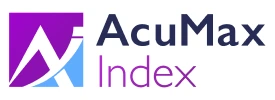There have been changes to the W-4 form, to avoid any tax surprises for yourself or your business review the new form and familiarize yourself with the changes. The W-4 form is what employees use to withhold income tax from their paycheck. The document reflects changes from the Tax Cuts and Jobs Act, which is a new law that overhauled the tax code and went into effect in 2018. The law nearly doubled the standard deduction, eliminated personal exemptions and put limits on certain itemized deductions. The IRS is hoping that the new form is more transparent and easy to understand. Here is an overview of some of the major changes to the form.
The biggest change is that the new W-4 form for 2020 removed allowances. The old W-4 form used to ask the number of allowances claimed, including one for yourself, your spouse and each dependent. The more allowances you claimed, the less tax you would have withheld from your pay. However, now that there are no more personal exemptions, there are no more allowances.
The new employee W-4 form is broken down into steps that help calculate the amount of income tax that will be owed. The form asks about expected filing status, family income from other sources or from a spouse’s job, the number of dependents and then the tax deductions that you plan on claiming.
It is a good idea to take a look at the new form and complete the IRS Withholding Estimator to see if you’re on track to withhold the correct amount. Completing the estimator early in the year will help you get your withholdings back on track and file a new W-4 form early if you need to make any changes. The Estimator is helpful if you had a change in your life in the last year if you only expect to work for part of the year, have self-employment income, if you’re subject to additional taxes (like the Medicare tax) or if you have dividend income or capital gains. The tool is private and doesn’t ask you to enter any personal information and the IRS doesn’t save the information that you enter. You will need to have a few pieces of information ready to put into the tool, and it would be helpful to gather up your most recent income tax return, you and your spouse’s most recent paychecks and information about other income sources to have the information readily available when using the IRS Witholding Estimator.
Most employees will not need to refile a form with their current employer, but new employees during onboarding will be asked to fill out the new W-4 form for 2020. All new employees first paid after 2019 must use the redesigned form. Additionally, any other employee who wishes to adjust their withholding must use the redesigned form. Allow for some additional time during onboarding as employees get used to the new form and it may be helpful to have resources available to help explain the changes. This chart is a great resource to share that compares the old W-4 with the newly updated edition.
If you want all employees to complete the new W-4 to have the forms consistent in your system then you may ask, but you may not require that they complete the new employee W-4 form. For those employees who do not complete a new W-4 you must continue to withhold based on the forms previously submitted and you are not permitted to treat employees as failing to submit a W-4 if they do not submit the new W-4 form to replace the one on file.
People Optimization Platform
Tailored Solutions
Helpful Resources
Our Company
Unlock your organization’s full potential with the industry’s premier pre-employment and people optimization platform.
- Contact Our Sales Team | (313) 914-5885
- Contact Customer Support | (313) 914-5885
Experience the power of the AcuMax Index firsthand with a FREE assessment and personalized analysis today!
- © AcuMax Index, 2025. All Rights Reserved.





